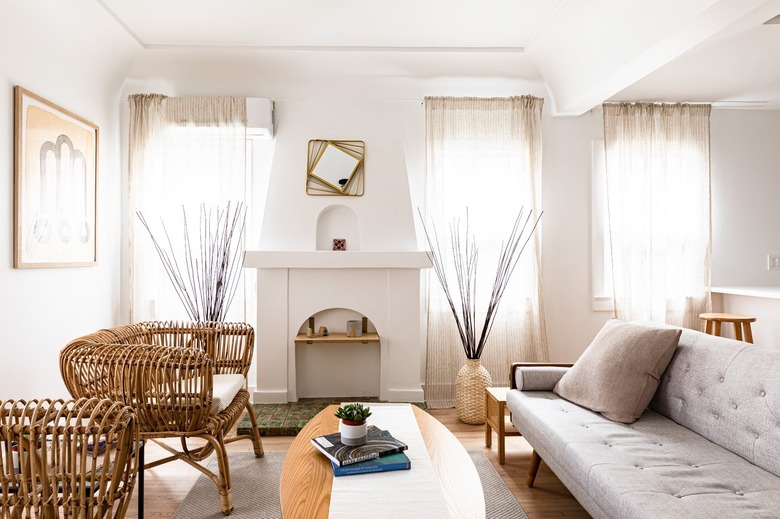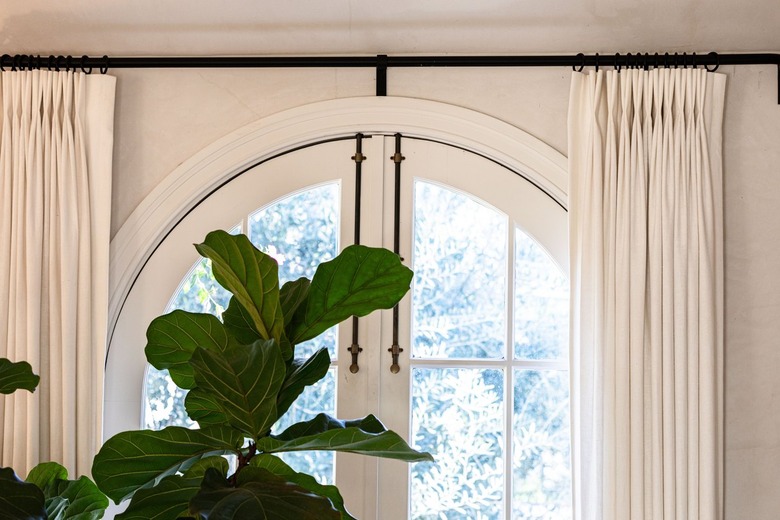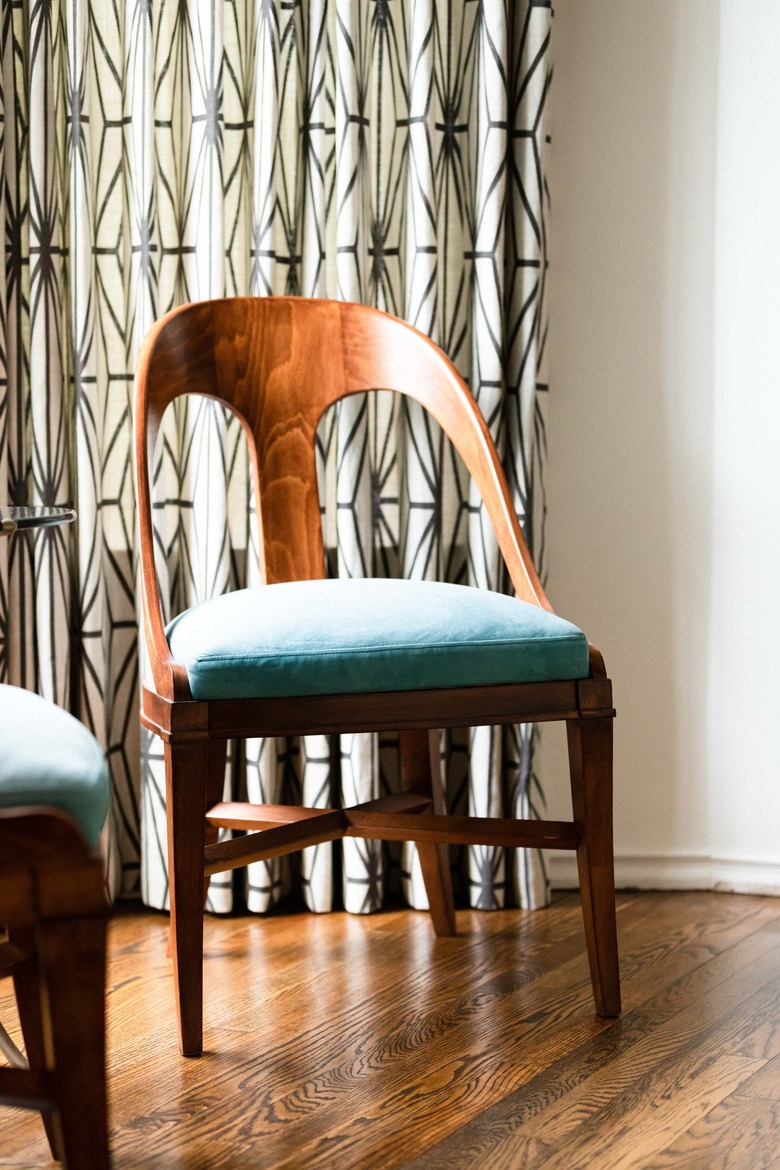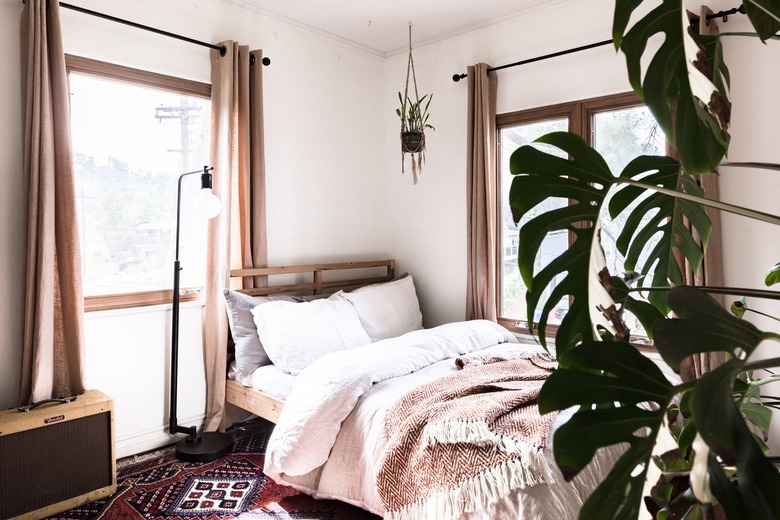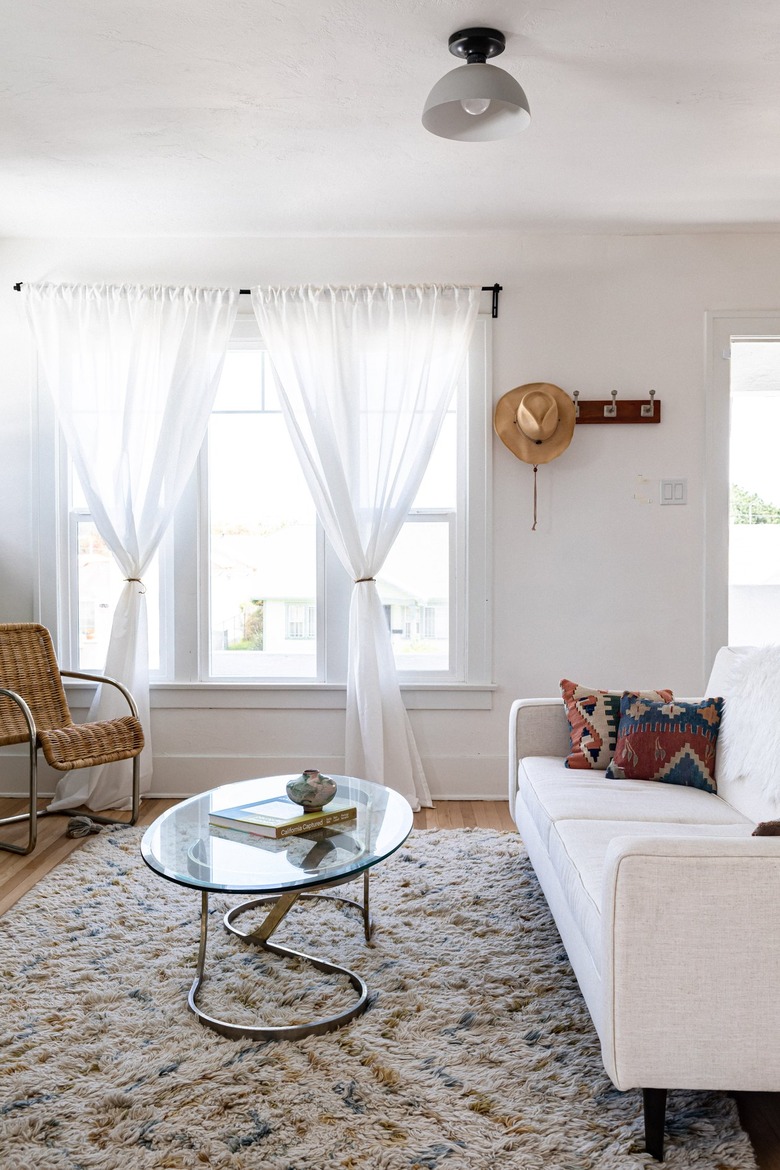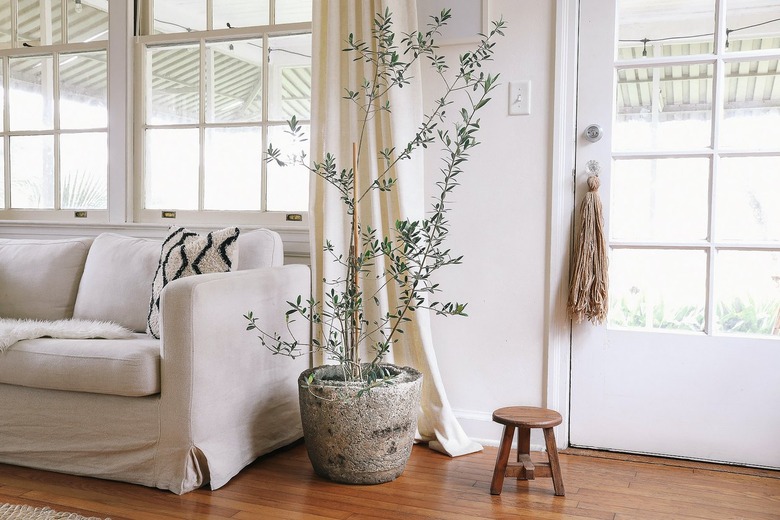6 Types Of Curtains: Choosing The Best Drapery For Your Home
We may receive a commission on purchases made from links.
Window treatments do a lot more for homeowners than act as a shield to the outside world. While they provide privacy and block unwanted sunlight, they also add visual interest and depth to interior design schemes. Plus, they can help pull a room together. Depending on the style and fabric you choose to go with, they can infuse drama, sophistication, or a laid-back vibe into your space.
Curtains can be purchased off-the-shelf or custom-made. As with most things that are specially tailored, it's hard to beat the fit, attention to detail, and variation of bespoke drapery. True, they do cost more, but if you can afford to splurge, they're worth it — particularly if you don't have standard windows or you're interested in a specialty fabric.
They are available in a surprising variety of styles, materials, and lengths to accommodate every room in your home, which can make purchasing curtains a daunting task. But no need to worry. Use the following guide as a blueprint to walk you through the curtain-buying process.
Types of Curtain Styles
Types of Curtain Styles
Curtains are not a one-size-fits-all purchase. Your home's aesthetic and decor should be a driving force when it comes to narrowing down your selection. Here's a list of all the different types of curtains to choose from.
1. Double Panel
Double panel curtains (also known as a panel pair) are the most popular choice. And just as the name implies, a pair of two separate curtain panels. This is the most popular drapery design and is well-loved for the pleasing symmetry it imparts to interiors. It's a versatile look that works best on large windows and bay windows that can support two panels of fabric.
2. Single Panel
Ideal for spatially challenged rooms that would be overwhelmed by two panels, a single panel curtain stacks to one side of a window when it isn't pulled closed and happens to be a great option for sliding glass doors. It can also be tied back for a playful asymmetrical appearance.
3. Tab-Top
This curtain design features wide tabs or loops on the top seam that are used to hang the drapery from a curtain rod. The casual look of tab-top curtains works with approachable aesthetics, like boho or farmhouse style. Plus, the absence of pleats allows prints and patterns to really shine.
4. Grommet
With grommet curtains, the header of each fabric panel is punctuated by large grommets that enable the drapes to slide easily on the rod. This style is ideal for curtains that are opened and closed often throughout the day. Eyelets, while similar in design to grommets, are smaller and not as strong.
5. Rod Pocket
Rod pocket curtains are a popular drapery style known for their simple design. The rod simply slides through the channel at the top of the curtain panel and you're good to go. Note: Sometimes it can be a challenge to slide the fabric back and forth with this configuration.
6. Pleated
Curtain headings (the top piece of the curtain that attaches to the curtain track or rod) can dramatically alter the appearance and drape of your curtains. They also affect how the window coverings will hang on the rod. As you might expect, pleated curtains are considered more formal and work best with fabric that has some heft, so the pleats will hold. There are several different types of pleating to consider, including:
- Box: Box pleats run deep, and the noticeable folds have a tailored and glamorous quality that works best with solid fabric and traditional decor.
- Goblet: Named for their resemblance to a wine goblet, goblet pleats impart a high-end look to curtains and work best in formal rooms with higher ceilings. The pleat-formation is delicate, so these are more of a decorative option and should be used to frame a window.
- Pencil: These pleats are tight and close together for visible, even ripples that result in a refined appearance. Pencil pleat curtains are more casual than goblet or box pleat curtains and are perfect for bedrooms or living rooms that don't require as much formality.
- Pinch: Pinch pleat curtains are the most popular type of pleating. Two-finger to five-finger pleats are stitched and pinched at the curtain heading, which allows for a graceful fold of fabric from top to bottom, resulting in an elegant and formal look. Use these curtains in primary bedrooms, dining rooms, and living or entertaining spaces.
Curtain Lengths
Curtain Lengths
Off-the-shelf, or pre-made, curtains come in five standard lengths: 63", 84", 94", 108", and 120". Custom curtains, on the other hand, can be tailored to any length. However, keep in mind the look you want to convey with the length of your curtains. There are four popular styles to consider:
Float
As the name suggests, this describes when the bottom of the curtains dangle or "float" just above the floor. Keep this look purposeful, and not like a measurement mishap, by leaving no more than 1 inch of space between the bottom of the drapery panels and the floor.
Brushing the Floor
When curtains graze or "kiss" the floor, precise measurements are mandatory. Be sure to account for drapery hardware, such as curtain rings (if applicable), when measuring.
Breaking the Floor
A bit longer than brushing the floor, curtains that are breaking the floor have an additional inch or two of fabric, but they are not quite as long as puddle. This design style has more of a casual feel and bonus, there's a bit more leeway for imperfect measuring.
Puddle or Pooling
The longest and most dramatic style consists of curtains that puddle or pool onto the floor with more than 2 inches of extra fabric. The romantic, statement-making look is best reserved for formal spaces such as dining rooms, elegant bedrooms, or stately living rooms.
Cafe
Cafe curtains impart a welcome cottage vibe to interiors, and are actually seeing a resurgence thanks to the popularity of granny chic decor. They're hung at the window's midpoint or higher, allow a good deal of sunlight to flow through, and are perfect for spaces where full coverage isn't necessary — namely kitchens and bathrooms.
Curtain Fabrics
Curtain Fabrics
As with the curtain style and length, the fabric should also correlate with the room and overall design aesthetic. Here are some of the most popular drapery fabrics that you need to know.
Cotton
Cotton is embraced for its ease of care and versatility. It is the goldilocks of fabrics — not too formal and not too casual — so it will blend in seamlessly with just about any design style and look right at home in any room of the house.
Linen
Linen's natural open weave structure lends subtle texture and depth. It's casual yet refined makeup is ideal in spaces that don't take themselves too seriously. Add a curtain liner for a more substantial look or leave it unlined and allow light to filter through.
Silk
Silk is elegant yet lightweight, making it a no-brainer for public spaces where just a bit of privacy and light filtration are desired, say a dining or living room. Good looks aside, keep in mind that silk fabrics wrinkle easily and don't hold up well when exposed to direct sunlight.
Velvet
Velvet is a sumptuous fabric that drapes beautifully and will infuse an elegant, formal vibe into any design. The material effectively blocks drafts, sound, and light, making it appealing for use in bedrooms. It's a heavyweight material with a smooth hand that will look spot-on in an art deco-inspired space, but might look out of place in some warm weather and tropical locations. Additionally, velvet requires special cleaning.
Wool
Wool has an appealing heft, allowing it to drape easily. Plus, it's strong enough to support embellishments like fringe and tassels. But it's not all good news. Wool is a higher maintenance material requiring dry cleaning, and its absorbency means that it's not suitable for rooms with a lot of moisture.
Polyester
Forget any preconceived notions you might have about polyester. It's durable, cost-effective, and easy to care for. In fact, many varieties can be wiped down if they become dirty or come into contact with steam or food splatter, making them a hardworking option perfect for high-traffic areas like the kitchen.
Curtain Exposure
Curtain Exposure
While there are numerous fabric options for curtains, they can usually be divided into two main categories: Sheer and blackout. Rooms where privacy, quiet, and blocking sun exposure are priorities (bedrooms and nurseries, for example) should use blackout curtains. Sheer and semi-sheer curtains work best in spaces where partial sunlight is desired.
Sheers
For a barely-there approach opt for sheer fabrics, like lace curtains, that will filter in a healthy dose of sunlight. This option is ideal for spaces where natural light is desired (as opposed to privacy), say in a home office or in the kitchen.
Semi-sheers
Semi-sheer curtains are denser than sheers. This means they will hereby provide a bit more privacy and light blockage, while still allowing light to permeate.
Window Scarfs
A window scarf is a long, thin piece of fabric that casually drapes in front of, or on the sides of, a window. It creates a dramatic look while letting in ample natural light, but tends to look a bit dated.
Blackout
Blackout curtains, as the name suggests, block light from entering the room and often include a liner on the backside of the fabric for added opacity.
How to Care For Curtains
How to Care For Curtains
Once the curtains are installed, don't neglect them. Regular upkeep will help them last longer and prolong their shape. Here are a few tips to ensure your drapery continues to look its best:
- Give curtains a gentle shake every day as you open and close them to remove dust.
- Use a low vacuum setting and vacuum curtains to remove dust and buildup once or twice a month.
- Some fabrics, like polyester and cotton, can actually be washed in the washing machine on the gentle cycle while other fabrics cannot. Sheer curtains, for example, should be hand washed to avoid damage, and velvet curtains should be dry cleaned. Always read the care label.
- It's recommended to hang/air dry curtains to prevent shrinkage.
Curtains are a multitasking design element that marries form and function — adding privacy, blocking light, heat, and cold, while also transforming the look and feel of a room. Armed with the basics, selecting curtains doesn't need to be an overwhelming process. You might even have a little fun.
Where to Buy Curtains
Where to Buy Curtains
Now, that you're armed with all of the basics, it's time to start shopping. Here are a few of our favorite go-to's when it comes to drapery and hardware, like rings, finials, tiebacks, and curtain rods.
